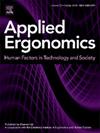视频娱乐减轻长时间自动驾驶中的安全风险:对认知负荷、疲劳和接管性能的影响
IF 3.4
2区 工程技术
Q2 ENGINEERING, INDUSTRIAL
引用次数: 0
摘要
随着车辆从手动驾驶转向自动驾驶,人类驾驶员的角色将从主动控制转变为被动监督。然而,长时间脱离驾驶任务可能会导致被动任务相关疲劳,这可能会对接管绩效产生负面影响。目前的研究旨在调查在长时间的自动驾驶过程中观看视频是否能减轻这些风险。研究人员对32名参与者进行了驾驶模拟实验,他们在有和没有视频娱乐的情况下,经历了15到60分钟不等的自动驾驶时间(ADT)。认知负荷、疲劳和接管绩效采用客观和主观测量进行评估。采用线性混合效应模型分析视频娱乐、ADT及其交互作用对因变量的影响。结果表明,视频娱乐不仅增加了认知负荷,而且有效抑制了ADT较长的疲劳增长,这反映在眨眼频率和KSS评分上。此外,视频娱乐通过缩短接管时间和增加碰撞的最小时间来降低长时间自动化场景中的安全风险。这些研究结果表明,视频娱乐可以通过减轻PTR疲劳来提高长时间自动驾驶场景下的舒适性和接管安全性。本文章由计算机程序翻译,如有差异,请以英文原文为准。
Video entertainment to mitigate safety risks during prolonged automated driving: Impacts on cognitive load, fatigue, and takeover performance
As vehicles are expected to shift from manual to automated driving, the role of human drivers changes from active control to passive supervision. However, prolonged disengagement from the driving task may induce passive task-related (PTR) fatigue, which may negatively impact takeover performance. The present study sought to investigate whether video entertainment during prolonged automated driving can mitigate these risks. A driving simulation experiment was conducted with 32 participants who experienced varying durations of automated driving time (ADT) ranging from 15 to 60 min, both with and without video entertainment. Cognitive load, fatigue, and takeover performance were assessed using objective and subjective measures. Linear mixed effects models were employed to analyze the effects of video entertainment, ADT, and their interaction on the dependent variables. The results indicated that video entertainment not only increased cognitive load, but also effectively suppressed the growth of fatigue with longer ADT, as reflected by blink frequency and KSS scores. Furthermore, video entertainment reduced safety risks in prolonged automation scenarios by shortening takeover time and increasing the minimum time to collision. These findings suggest that video entertainment can improve comfort and takeover safety under prolonged automated driving scenarios by mitigating PTR fatigue.
求助全文
通过发布文献求助,成功后即可免费获取论文全文。
去求助
来源期刊

Applied Ergonomics
工程技术-工程:工业
CiteScore
7.50
自引率
9.40%
发文量
248
审稿时长
53 days
期刊介绍:
Applied Ergonomics is aimed at ergonomists and all those interested in applying ergonomics/human factors in the design, planning and management of technical and social systems at work or leisure. Readership is truly international with subscribers in over 50 countries. Professionals for whom Applied Ergonomics is of interest include: ergonomists, designers, industrial engineers, health and safety specialists, systems engineers, design engineers, organizational psychologists, occupational health specialists and human-computer interaction specialists.
 求助内容:
求助内容: 应助结果提醒方式:
应助结果提醒方式:


